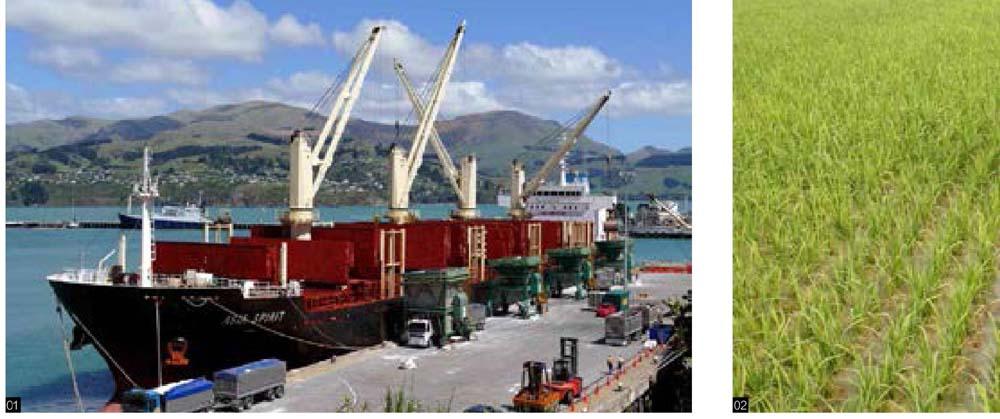India Shouldn’t Be Afraid of Joining RCEP
Khanindra ChDas

India opted out from the Regional Comprehensive Economic Partnership (RCEP) at the 3rd RCEP Summit held in Bangkok in November 2019, at least until some of its core concerns are addressed. The fear of an import surge into India — particularly from China — as a result of the trade agreement was a major concern. There was difficulty negotiating rules of origin and safeguard measures, as well as service sector market access commitments. Some in India held the view that the impact of the trade pact on farming communities and small-scale industries would be adverse.
Indian political leaders were motivated to opt out of RCEP amid negative public sentiment in the slowing Indian economy. GDP growth was recorded at 5% during the April-June quarter of 2019 — the lowest rate of quarterly growth since the January-March quarter of 2013. Indias experience with most of its past free trade agreements, including those with ASEAN, Japan and South Korea, also hampered its negotiators.
But is India throwing the baby out with the bathwater by opting out of RCEP?
The fears of an import surge may be exaggerated. If India is inefficient in some sectors compared to other RCEP member countries, then the trade deficit might increase. But an increased trade deficit must be financed by larger investment flows.
India already imports significant volumes of plantation products from RCEP member countries such as Vietnam (US$ 223 million over 2018-2019) and Indonesia (US$ 86 million over 2018-2019). Additional imports due to tariff reductions would be much lower than expected as long as Indian producers are stimulated to improve farm efficiency.
Indias trade deficit with any individual country or bloc of countries should not be the only criteria for judging the success or failure of a free trade agreement.
The concerns about an import surge adversely affecting Indias manufacturing sector may have some basis, but not given the arrangements RCEP has put in place to deal with them. Since the liberalisation of the Indian economy began in 1991, the competitiveness of Indian industries has improved significantly. India has developed value-adding capabilities in numerous industries, including electronics, pharmaceuticals, automobiles and some services. Indian industries need to accept RCEP as a challenge to improve efficiency and global competitiveness and mobilise the government into removing the impediments at home to doing that.
Much more needs to be done to mitigate structural bottlenecks and improve international connectivity to lift competitiveness in the manufacturing sector. India lacks efficient international connectivity — particularly logistics and maritime connectivity. Efficient manufacturing requires the rapid movement of goods across borders throughout different stages of production. A look at the 2019 UNCTAD Liner Shipping Connectivity Index reveals that Indian ports have a long way to go when it comes to catching up with ports of other emerging countries such as China, Vietnam, Thailand and Malaysia.
Successive Indian governments have taken up schemes in attempts to promote the countrys manufacturing and exports industries. Tariff reductions, foreign direct investment liberalisation, the “Make in India” policy and the WTO-compliant scheme for Remission of Duties or Taxes on Export Products (RoDTEP) are some steps in this direction. That Indias Ease of Doing Business ranking has improved to 63rd for 2019-2020 up from 77th for 2018-2019 is a testimony to this fact. Addressing structural bottlenecks at home and integration with regional trade blocks goes hand in hand with renewed pushes for multilateralism.
The inadequate integration of Indian manufacturing with international production networks has been one of the major reasons for low manufacturing investment from global investors at a time when the US-China trade war is forcing global manufacturers to shift from China to Vietnam, Malaysia, Cambodia, Bangladesh and other emerging markets.
Southeast Asian countries such as Vietnam, Cambodia, Malaysia and Bangladesh in South Asia are already integrated with East Asian production networks, which enable these countries to benefit from production relocation due to the ongoing trade transformation in Asia. In contrast, India has very limited access to manufacturing production networks in East Asia, or its immediate South Asian neighbourhood via the South Asian Free Trade Agreement (SAFTA) which lacks sufficient depth. RCEP is fundamental to correcting Indias poor integration with East Asian production networks.
RCEP provides opportunity for India to improve its international competitiveness and become a stronger regional and global manufacturing nation. The creation of this economic bloc would be a win-win deal that would spur the integration of India with these countries economically and beyond. India, and other member countries negotiating the deal, need to come to terms to make the comprehensive economic partnership a reality.
· Source: East Asia Forum

